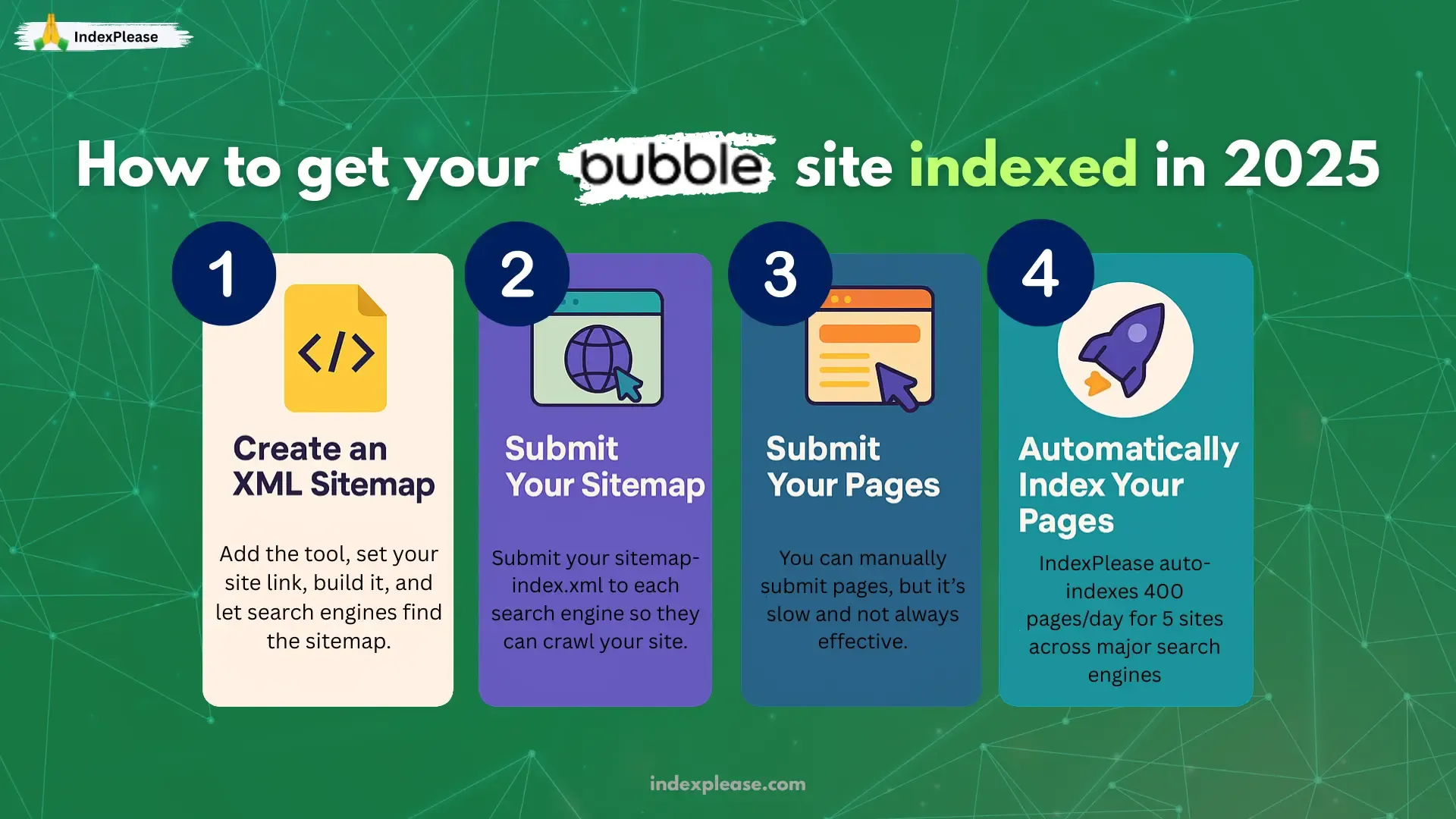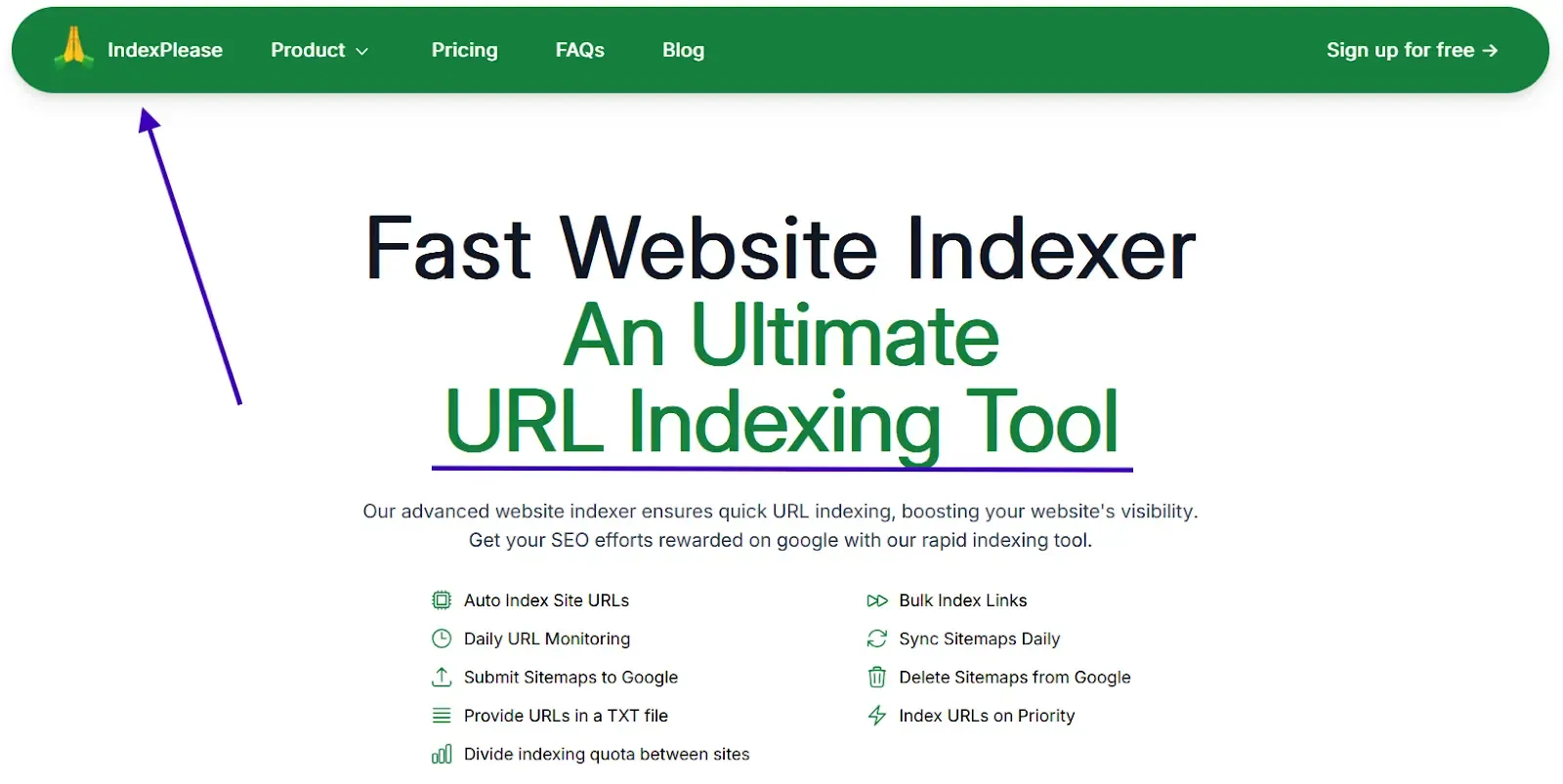
How to Get Your Bubble Site Indexed in 2025
Indexing is the process search engines use to crawl your website, understand its content, and store it in their database. A well indexed site is more likely to appear in relevant search results, boosting visibility, attracting more visitors and increasing organic traffic.
Now that you have a basic understanding of indexing and why you should care, let’s take a look at how you can get your Bubble site indexed as soon as possible. Picture this, you’ve built a sleek Bubble app, user friendly, feature rich and ready to scale. But when you search for your core keywords, your site is nowhere to be found. Meanwhile, competitors with clunkier sites dominate the rankings. What gives?
Bubble’s no code agility comes with a hidden tax: indexing hurdles. In 2025, Google’s evolved algorithms and emphasis on user experience have made it harder than ever for Bubble sites to earn their spot in search results. Consider this:
- 38% of Bubble pages aren’t indexed due to client-side rendering issues 53% of Bubble built sites fail Core Web Vitals out of the box, crippling crawl efficiency.
1. Why Bubble Sites Get Ghosted by Google

The No Code SEO Struggle
Bubble’s heavy use of client side rendering (CSR) combined with dynamic URLs often leads to significant indexing challenges:
JavaScript Overload: Googlebot struggles to execute Bubble’s JavaScript-heavy pages fully, leaving critical content unrendered.
Dynamic URL Chaos: Auto-generated URLs like
/page?=123lack semantic clarity, confusing crawlers.Lazy Loading Traps: Images and text loaded via Intersection Observer often miss initial crawls.
2. Technical SEO Optimisation
Step 1: Force Static Like Behavior
Pre-Render Critical Pages: Use Bubble’s HTML Embed plugin to inject static content (headers, product descriptions) directly into the HTML.
Canonicalize Dynamic URLs: Add
rel=canonicaltags to point duplicate pages (e.g., filtered views) to a master URL.
Step 2: Fix Core Web Vitals
Compress Images at Upload: Use Image Optimizers to auto resize images to
max-width: 1600pxand convert to WebP.Lazy Load Non-Essential JS: Delay non-critical scripts (chat widgets, animations) until after page load.
Preconnect to Third Parties: Add
<link rel="preconnect" href="https://fonts.gstatic.com">to speed up font loading.
3. Submitting to Search Engines
Indexing API: For time sensitive pages (e.g., events, flash sales).
Sitemaps: Generate with Bubble Sitemap Generator, prioritizing pages with a
lastmoddate.

1. Create an XML sitemap
To help search engines access your content efficiently, start by generating an XML sitemap. An XML sitemap is a structured file that lists all the important URLs on your website in a format that’s easy for search engines to understand. It guides crawlers through your site, making the indexing process faster and more reliable.
Fortunately, Bubble simplifies this process. Bubble Dashboard → Application Settings → SEO / Meta Tags → SEO Settings, then enable “Expose a sitemap file.” Bubble will auto generate your sitemap and keep it up to date whenever you add or remove pages, no manual updates required.
2. Submit your sitemap
Once your XML sitemap is ready, the next step is to submit it to each search engine.
Each platform has its own method for handling sitemap submissions, but there’s no need to stress. We’ve put together step-by-step guides for all the major search engines to walk you through the process. Explore these guides to get started**:**
3. Submit your pages
Submitting your sitemap is just the first step. After that, you have two options, you can either wait for search engines to index your pages on their own, which could take weeks or longer or submit them manually.
Manual submission requires logging into each search engine’s webmaster tool and going through the process step by step. It’s time consuming, especially for websites with a large number of pages and still doesn’t guarantee that your content will be indexed.
That said, if you’d prefer to take the manual route, we’ve created detailed guides for each major search engine to help you through the process:
Automatically Index your pages

Getting attention directed to your Bubble site in 2025 requires getting it indexed. This can be achieved by creating an XML sitemap, configuring SEO settings and using webmaster tools to submit the pages. It’s fairly simple to execute, but if you have a larger business, it comes with a lot of manual, and often, erratic processes that can be quite frustrating.
In these situations, IndexPlease is the saving grace. For a monthly subscription of 7 dollars, IndexPlease does the boring task of manual submission for you, automatically submitting 400 pages a day for indexing in Yandex, Google and Bing, along with a few others. Now, without waiting endlessly for a search engine to crawl your site, your Bubble site can get indexed within 48 hours.
If reducing manual tasks and making life easier, all while ensuring your site drives traffic efficiently sounds appealing, IndexPlease is at your service. Start automating your indices now and simply let your site develop organically.
FAQs
Why is indexing so important for my Bubble site?
The Bubble site loses out on valuable traffic and visibility due to a lack of indexing. In simple terms, indexing is necessary because it helps Google, Bing and other search engines recognize and list your site in their search results. Indexing makes it easier for people to find your website, which helps boost organic traffic but without any form of indexing, your Bubble site will never show up in search results.
How do I create an XML sitemap for my Bubble site?
Creating an XML sitemap on Bubble is quite simple. You just need to log into your Bubble account, go to your Dashboards, click Application Settings > SEO / Meta Tags > SEO Settings and then click Expose a Sitemap File option. You can now look forward to automatic sitemaps as the sitemap is going to update automatically after adding or removing pages from the site.
How long does it take for my site to get indexed after submission?
There is no definite answer to this question. You can let the search engines crawl your site automatically but this might take weeks or more. The process is quite unpredictable and does not guarantee a solution for indexing. However, this method is completely out of your control.
Is there a way to increase the speed of indexing?
Definitely! Instead of having to submit each of your pages manually, you can let IndexPlease submit up to 400 pages a day for $9 a month. Your site will be indexed on Google, Bing, Yandex, Seznam.cz and Naver within two days. It’s a ready-made solution for those who do not want to waste a lot of time looking for faster indexing methods.
What in particular can IndexPlease add to indexing that others can’t?
Manually submitting your pages for indexing can be time consuming and tedious. With IndexPlease, you can skip the wait and automate the process, ensuring faster indexing and more organic traffic to your site. Plus, you can manage up to 5 sites under one subscription, making it an ideal solution for businesses and developers with multiple sites.